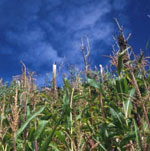Here’s a simple game that makes a not-so-simple point.
Stand in a line, with several friends. Each of you hold your right index finger out in front of your body. Now place a long stick across all of your fingers, balanced upon them. Your collective goal is to lower the stick to the ground. There is only one rule. Each finger must remain in contact with the stick at all times. If anyone’s finger loses contact with the stick, you must raise the stick back to the starting level and begin again.
According to Dennis Meadows and Linda Booth Sweeney, who include the game in their book, The Systems Thinking Playbook, groups of people following this rule almost always raise the stick instead of lowering it. As each player works to keep in contact with the stick the group as a whole pushes steadily in the direction opposite to its goal.
This might sound like a silly exercise, but it makes an important point. We can agree to rules that seem to make sense, we can follow those rules, and we can still have outcomes no one wants or even anticipates.

To market, to market, to buy sustainable produce.
In my column last month, I described such a system — commodity agriculture. Individual producers compete to stay in business by attempting to produce more commodity for less cost. As everyone produces more, the price per bushel falls, and to maintain the same income the producer must grow more or cut costs. Production goes up, and costs go down, but because land stewardship or contribution to community does not count as a benefit in this equation, and because damage to the soil or to the watershed does not count as a cost, environmental and social indicators decline while “efficiency” rises.
The solution seems simple. Change the rules, so that all the costs and benefits society cares about factor into the economic decision-making. Charge for the destruction of biodiversity or the degradation of water quality. Reward good stewardship and contributions to local community.
The exact solutions are local matters. They will be different for soybeans and corn, and for codfish and tuna. The knowledge of people living and working in these systems will be central to the design of policies that allow these systems to meet their environmental and social goals.

The rat race.
But even before we come to implement specific policies, there are challenges to overcome. For those commodities sold into global markets, it is not a simple matter to change the rules to take social and environmental goals into account. If a pollution tax raises the price of corn in the U.S., multinational grain buyers — caught up in their own competitive dynamics — will feel themselves forced to buy from other producers, in places that do not account for environmental degradation. As long as the buyers are intent on buying the cheapest commodity, growers in one region cannot afford to improve the rules of their systems unless growers in other regions take a similar step. This sets up the system for what some have called a “race to the bottom,” with no one able to improve the system rules on their own and everyone experiencing pressure to push costs off onto the environment or onto workers and communities.
A system is primed for this problem when the reach of buyers is broader than the decision-making boundaries of producers. Solutions will require reducing this asymmetry, either by limiting the reach of buyers or extending the solidarity of producers.
You hear more in the news about the first option. That is a part of what the “anti-globalization” movement is about — changing the rules of the largest economic system so that people are able to take steps to make their local economies serve them better. This is critical work; no system can be healthy if the rules at one level create pathology at another level.

Rounding a corn-er?
But there are other possibilities that need our energy, too. Governments from producing regions could commit to policies that incorporate social and economic goals on a multinational scale. If all the corn-producing regions of the world followed this course of action, it would no longer matter that multinational commodity-buying corporations shopped for the cheapest grain. Wherever they turned, they would find local economies that were accounting for the full costs of grain production.
The corporations that buy and process commodities — corporations made up of people who, it must be said, don’t set out to degrade resources or communities — could also come together to find solutions. Because a relatively small number of companies buy any one commodity, such a scenario is a practical possibility. The corporations could agree on minimum environmental and social standards, and take the steps toward these standards together, paying the full costs together, with none of them at a competitive disadvantage.
Can commodity producers, or governments, or competing corporations come together to end the race to the bottom? That is a huge dream, and one that may seem to require more cooperation than our world can muster right now.
On the other hand, it is a dream that is rooted in the reality of our planet. We are one people, living together on one small world. Sooner or later we are going to have to embrace this fact. Anything less means sitting back and waiting for the race to the bottom to reach its final destination. All of us need to demand that the governments we empower and the corporations we buy from end that race and begin a different one to the top, while there is still time.


